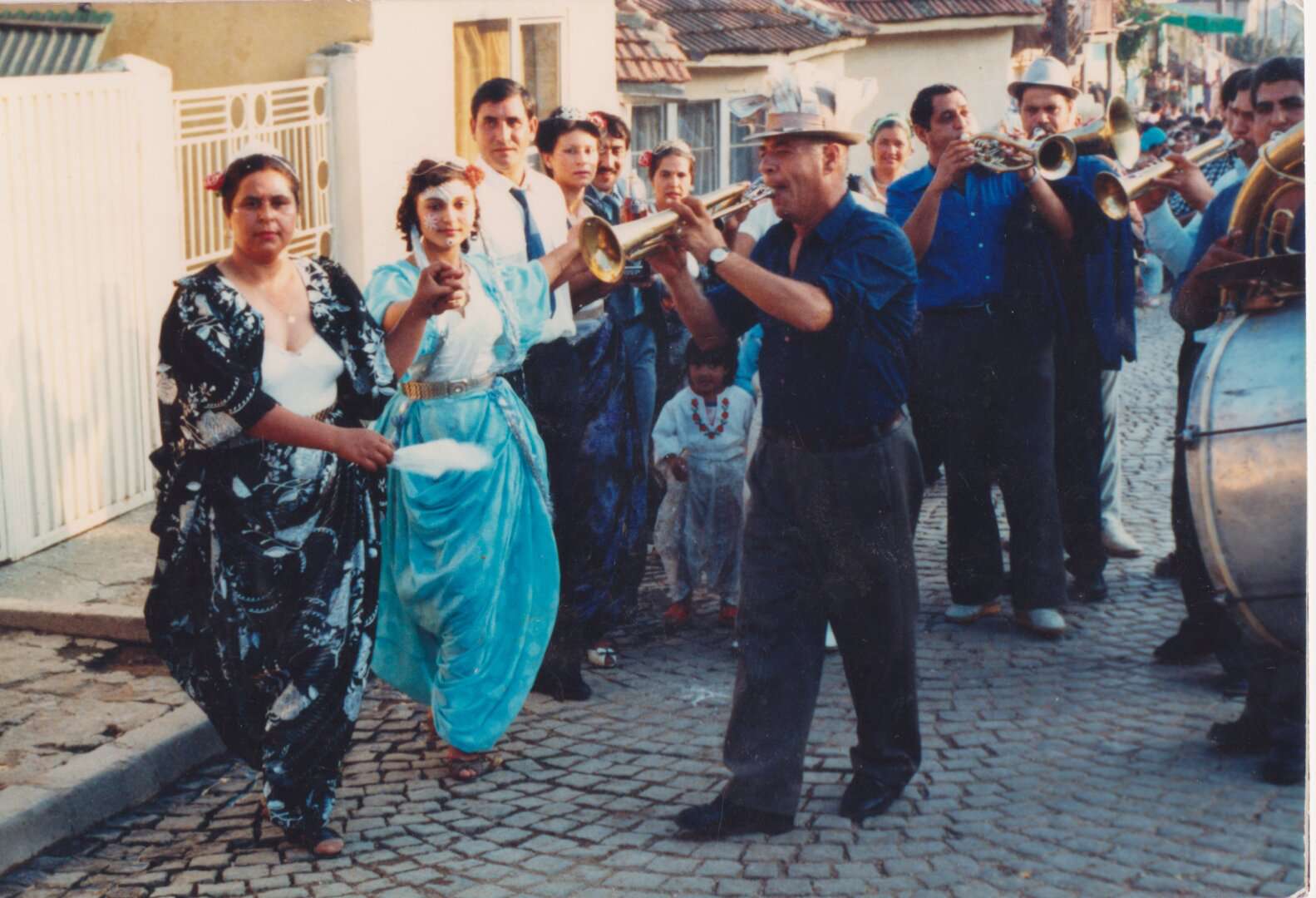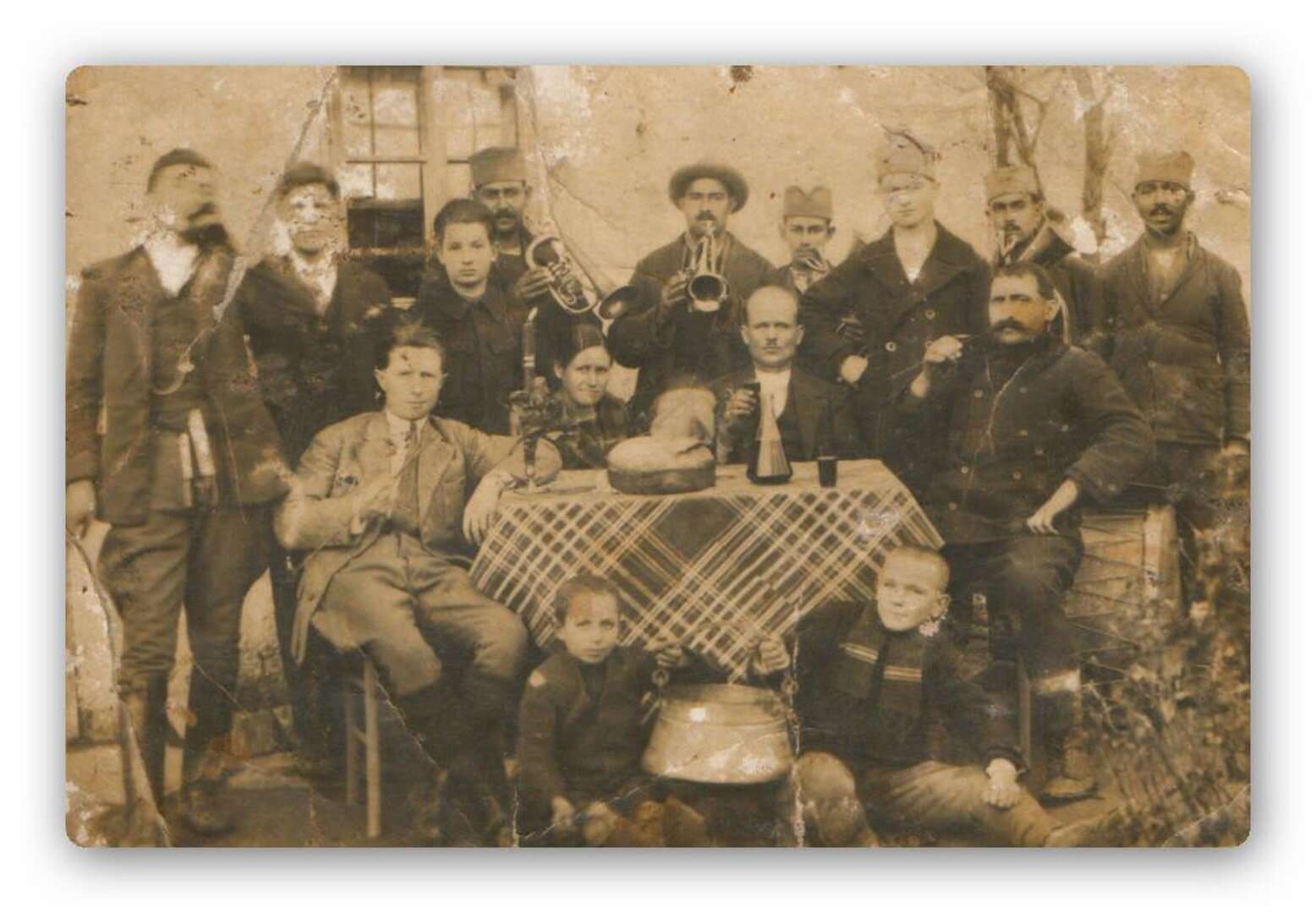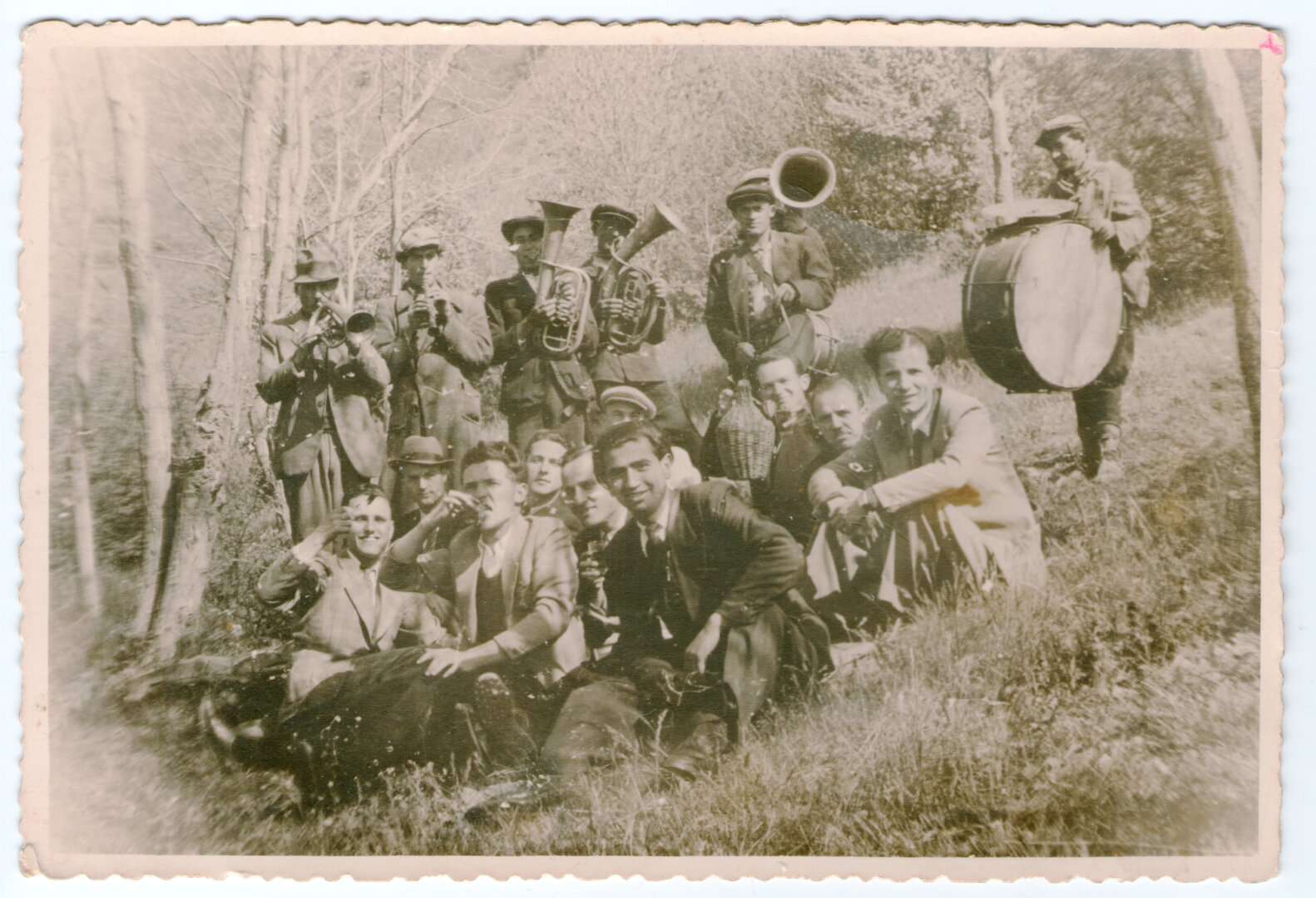In southeastern Serbia, Romani musicians dominate the brass band genre. Professional musical performance has long been one of the most lucrative and prestigious ways for Roma to make a living, as marginalization by majority society limited their access to more mainstream forms of work.
Romani Brass Bands in Southeast Serbia – An Overview
Romani brass musicians have become deeply embedded in the local sociocultural fabric in places like Vranje, Serbia. Local Serbs and Roma cannot conceive of family celebrations like weddings without brass because the music is tightly linked to major rituals and cultural traditions. Romani brass musicians are central to the ceremonies that clinch marriages, expand kinship networks, and shape community identity through shared cultural practices of music, dance, and ritual.

The legendary Bakija Bakić and ensemble perform for a Romani wedding. Vranje, Serbia, mid-1980s
Rights held by: Neviza Ćerimović | Licensed by: Neviza Ćerimović | Licensed under: CC-BY-NC-ND 4.0 International | Provided by: Neviza & Miroslav Ćerimović – Private Archive
Nenad Mladenović and band perform Svekrvino Kolo, a slow and emotional ritual dance in 7/8 (3+2+2) performed by the groom’s mother at the beginning of a Romani wedding. The musicians stretch the meter or slightly slow the tempo to increase the intensity. Vranje, Serbia, July 2011

Dejan Avdić and orchestra perform Svekrvino Kolo in the style typical of Vranjska Banja at a Romani wedding. Vranjska Banja, Serbia, July 2010

Dejan Avdić and orchestra play a 9/8 (2+2+2+3) čoček to accompany a wedding procession as celebrants dance down the street. Vranjska Banja, Serbia, April 2010

Jovica Ajdarević and orchestra perform Svekrvino Kolo at a Serbian wedding. Musicians play the same melody for Serbs as they do for Roma, but at a faster tempo and with less elaborate improvisation. Preševo, Serbia, August 2011

Jovica Ajdarević and orchestra perform the popular tune Svadba, svadba [Wedding, wedding!] to entertain the groom at a Serbian wedding. This genre of ‘newly composed folk music’ is based on folk music elements primarily from central Serbia. The fast duple meter is lively, and the lyrics playfully comment on weddings. Preševo, Serbia, August 2011

Jovica Ajdarević and band accompany the ritual ‘dancing of gifts’ for important guests at a Serbian wedding with a suite of songs in 7/8. The song, Zapevala sojka ptica [The nightingale started to sing] is from Kosovo and refers to an unwilling bride’s gifts. Preševo, Serbia, August 2011
Romani brass musicians are also key cultural brokers in the musical life of southeastern Serbia. Roma were likely first exposed to brass instruments through military service during the Balkan Wars (ca. 1912–1913), and subsequently formed ensembles to perform local folk music upon their return home. Romani brass bands have preserved older repertoires from the 19th century, performing them at present-day celebrations in Vranje.

Romani brass band performing at the patron-saint celebration (slava) of the Crevarci family. Vranje, Serbia, 1920s
Licensed by: Nebojša Stojanović | Licensed under: Rights of Use | Provided by: Nebojša Stojanović – Private Archive
Romani brass musicians entertain a group of Serb townsmen at an outdoor excursion for May Day. Vranje, Serbia, 1 May 1938
Licensed by: Novica Jovanović | Licensed under: Rights of Use | Provided by: Novica Jovanović – Private ArchiveAt the same time, Romani performers are also impressive musical innovators. Romani brass musicians regularly adapt tunes from global popular music hits and film scores to generate new dance tunes for local consumers, reworking them to connect with the aesthetic standards and ‘groove’ desired by local Roma and Serb patrons.
Romani musicians also increasingly engage with demand for so-called ‘Balkan Gypsy Brass’ among national and international audiences, popularizing the sound of Serbian Romani much further abroad. Romani musicians are central attractions at the internationally-renowned Guča brass band festival in Serbia, often winning top prizes in the annual national competition. Winning bands record widely-circulated albums, appear on TV shows and in film soundtracks, and secure international touring contracts and gigs.
Nenad Mladenović and his orchestra perform a čoček during the final competition event at Serbia’s national brass festival. Guča, Serbia, August 2009
Rights held by: Nenad & Stefan Mladenović (performance) — Alexander Marković (recording) | Licensed by: Nenad & Stefan Mladenović (performance) — Alexander Marković (recording) | Licensed under: CC-BY-NC-ND 4.0 International | Provided by: Alexander Marković – Private Archive


